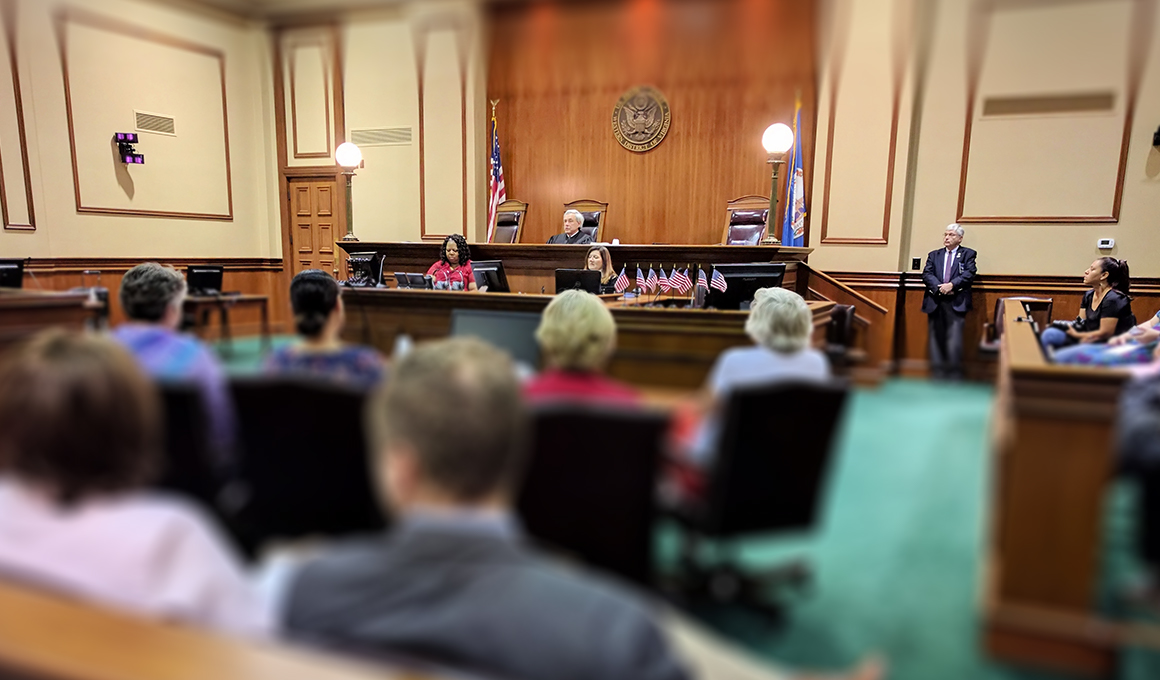Effective trial presentations combine visuals, data, and strong arguments.
Effective trial presentations combine visuals, data, and strong arguments.
Blog Article
Just How Test Presentations Enhance Your Debate and Persuade Jurors
Test discussions serve as an essential mechanism for boosting legal arguments and persuading jurors. The critical use of visuals not only clears up complex info yet also captures jurors' attention a lot more properly than words alone.

Importance of Visual Aids
Aesthetic aids play an important duty in improving the efficiency of trial discussions, as they can substantially enhance target market interaction and retention of details. In the context of a trial, where jurors are charged with handling facility info, aesthetic aids serve to streamline and clarify bottom lines. Charts, charts, and images can convey information and ideas that might otherwise overwhelm or perplex jurors, permitting for a much more uncomplicated understanding of the proof offered.
Furthermore, visual aids aid in keeping juror focus throughout the procedures. By damaging the monotony of spoken testimony, these devices can stress vital arguments, making them a lot more unforgettable. Efficient aesthetic aids can additionally stimulate psychological responses, which can be critical in persuading jurors to align with the speaker's narrative.

Crafting Engaging Stories
An engaging narrative is important in trial presentations, as it acts as the foundation of efficient persuasion. It enables attorneys to weave with each other realities, proof, and psychological elements into a systematic tale that resonates with jurors. This narrative structure enables jurors to comprehend the intricacies of the situation while directing them with the lawyer's argument.
To craft an engaging narrative, attorneys need to concentrate on quality and comprehensibility. This entails developing a clear protagonist-- typically the client-- and describing their trip with the occasions concerned. Providing the truths in a rational series boosts understanding and keeps engagement. In addition, the use of dazzling descriptions can produce psychological photos that help jurors picture the events, making the story much more memorable.
Furthermore, incorporating essential styles throughout the discussion reinforces the core message and aids in retention - trial presentations. The story should not only convey details yet likewise stimulate a feeling of justice, highlighting the risks included. Ultimately, a well-constructed narrative fosters a link between the jurors Find Out More and the case, placing the attorney's argument as both trustworthy and engaging, therefore raising the chance of a positive verdict

Involving the Court Psychologically
Efficient jury interaction hinges on the lawyer's capacity to attach with jurors on an emotional level. This link can substantially impact jurors' assumptions and their best decision-making.
Aesthetic aids, such as pictures or video clips, can even more enhance emotional engagement, supplying jurors with vivid depictions of the situation's human components. Crafting a story that highlights the struggles and accomplishments of the people entailed makes sure that jurors see beyond the lawful arguments and identify the human consequences of their decisions.
A lawyer's enthusiastic distribution can resonate with jurors, reinforcing their emotional financial investment in the situation. It's essential to balance emotional appeals with valid proof, making certain that jurors really feel obliged to act while staying based in the fact.
Structuring Your Discussion

The body of the discussion must be rationally fractional into vital points, each sustained by engaging proof. It is useful to make use of narration methods to weave realities right into a story that jurors can conveniently comply with. Aesthetic aids, such as charts and video clips, can boost understanding and interaction, aiding to highlight important pieces of evidence.
Real-World Study
Examining real-world instance research studies gives very useful insights right into the art of trial discussions and persuasion. The defense group effectively employed a method that integrated high-profile expert testimonies with multimedia presentations, which astounded jurors and inevitably affected their decision.
One more notable instance is the "McDonald's Coffee Instance," where the complainant's attorneys used graphic images of the injuries received by Stella Liebeck. trial presentations. This stark visual evidence played an essential function in sharing the extent of her burns, bring about a significant court honor. Such situations demonstrate that impactful trial presentations commonly depend upon the effective combination of visuals and storytelling to stimulate emotional feedbacks from jurors
Furthermore, the "Casey Anthony Trial" highlighted the relevance of narrative comprehensibility and credibility. The prosecution's failing to establish a compelling timeline lessened their persuasive power, emphasizing the necessity of a well-structured presentation. Evaluating these instances reveals that successful test presentations call for tactical preparation, psychological engagement, and the capacity to resonate with jurors' worths and beliefs.
Final Thought
Trial discussions dramatically improve disagreements and convince jurors with the calculated usage of visual aids, engaging stories, and emotional engagement. this A well-structured presentation balances emotional allures with accurate proof, inevitably reverberating with jurors' values.
Report this page